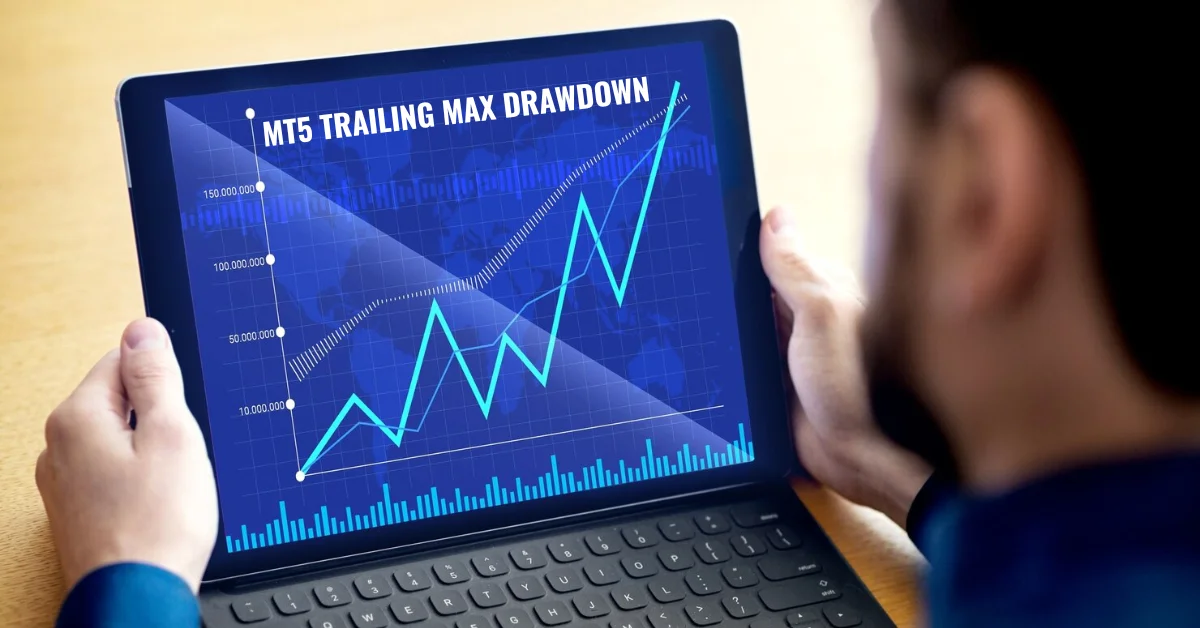FINANCE
Economic Vs. Non-Economic Damages in Personal Injury Case: What’s the Difference?

In a personal injury case, economic damages cover your measurable financial losses like medical bills, lost wages, and rehabilitation costs. These damages are straightforward to calculate with proper documentation.
Non-economic damages, on the other hand, address intangible losses such as pain and suffering, emotional distress, and loss of enjoyment of life. These are more subjective and require detailed evidence like medical records and personal testimony. Understanding both types is essential for securing fair compensation. To grasp a more inclusive view and maximize your claim, visit this page for useful details.
Understanding Economic Damages
When you’re dealing with a personal injury case, economic damages are the quantifiable financial losses directly linked to the injury. These damages aim to provide a clear compensation breakdown, showing the financial impact of your injury. By assigning a monetary value to each aspect of your economic loss, you can understand how your case is valued legally and financially.
Understanding economic damages involves a thorough calculation of all out-of-pocket expenses related to your injury. This includes medical bills, lost wages, and any ongoing costs for rehabilitation or therapy. Each of these components is assigned a specific monetary value, ensuring that you receive fair compensation for the financial burden you’ve endured.
It’s crucial to document every expense meticulously, as this documentation will support your claims. Failing to account for all costs can result in an undervaluation of your economic loss, impacting the overall compensation you receive.
Key Types of Economic Damages
When evaluating economic damages in your personal injury case, you’ll need to take into account both medical expenses and lost wages. Medical expenses include costs for treatments, surgeries, and ongoing care.
Additionally, lost wages account for the income you missed due to your injury and any future earning potential affected.
Medical Expenses Breakdown
Medical expenses, an important component of economic damages, encompass costs like hospital stays, surgeries, medications, and ongoing rehabilitation. When you’re dealing with these expenses in a personal injury case, it’s crucial to understand the full scope of your financial responsibilities.
First, consider your insurance coverage. Your health insurance may cover a significant portion of your medical bills, but it’s uncommon for it to cover everything. Any deductibles, co-pays, and services not covered by your plan will fall to you as out of pocket costs. These can add up quickly, especially if your injury requires long-term care or multiple follow-up visits.
Additionally, you may face uncovered expenses like specialized treatments or alternative therapies that are important for your recovery but not recognized by traditional insurance plans. In such scenarios, a detailed breakdown of all medical bills and receipts is essential. This documentation will substantiate your claim for economic damages, ensuring you get compensated for every dollar spent.
Navigating the complexities of medical expenses in personal injury cases requires meticulous attention to detail. By thoroughly documenting every cost and understanding your insurance coverage, you can maximize your compensation and focus on your recovery.
Lost Wages Analysis
Understanding your lost wages is crucial in accurately calculating economic damages in a personal injury case. Wage loss encompasses the earnings you’ve missed out on due to your injury, and it requires a detailed income analysis. To quantify these damages, you’ll need to provide documentation such as pay stubs, tax returns, and employer statements, which outline your regular earnings before the injury.
An effective income analysis will also consider any bonuses, commissions, or additional compensation you’d have earned. If you’re self-employed, this analysis becomes more intricate, requiring a review of your business records and potential contracts lost due to your injury.
Additionally, if your injury affects your ability to work in the future, you’ll need to consider future wage loss. This involves projecting your potential career trajectory and calculating the difference between your expected earnings without the injury and your likely earnings given your current condition.
Your attorney will collaborate with economic experts to make sure every aspect of your wage loss is thoroughly documented and accurately quantified. By doing so, you can seek fair compensation that reflects the true economic impact of your injury.
Calculating Economic Damages
Accurately calculating economic damages in a personal injury case demands a thorough assessment of financial losses directly connected to the injury. You must start by quantifying losses such as medical expenses, which involve hospitalization, surgeries, medications, and ongoing treatments. Detailed documentation from healthcare providers will substantiate these costs.
Next, consider the financial impact of lost wages. Gather pay stubs, employment records, and expert testimony to determine the income you’ve lost during your recovery period. If the injury affects your future earning capacity, you’ll need a thorough evaluation from vocational experts to project long-term financial losses.
Don’t overlook property damage, like vehicle repairs or replacement costs if an accident was involved. Get repair estimates and receipts to support your claim. Additionally, track out-of-pocket expenses such as transportation to medical appointments and any necessary home modifications to accommodate your injury.
Lastly, it’s crucial to maintain a clear record of all these financial impacts. Organized documentation not only validates your claim but also strengthens your bargaining position during settlement negotiations or trial.
Exploring Non-Economic Damages
To understand non-economic damages, you’ll need to contemplate pain and suffering as well as emotional distress impact. These damages compensate for the intangible effects of an injury, including ongoing physical pain and the emotional toll it takes on your life.
Properly quantifying these elements requires a nuanced approach to guarantee you’re fully compensated.
Pain and Suffering
In personal injury cases, pain and suffering represent an essential component of non-economic damages, encompassing the physical and emotional distress endured by the victim. This kind of damage goes beyond tangible financial losses and addresses the profound impact on your quality of life. Factors like emotional trauma and mental anguish play an important role in determining the extent of your pain and suffering.
When you’re involved in a personal injury case, documenting your pain and suffering is essential. It’s not just about the physical pain; you must also consider how the injury has affected your emotional and mental well-being. Emotional trauma can manifest in various ways, such as anxiety, depression, or even post-traumatic stress disorder (PTSD). Mental anguish refers to the severe emotional distress that can make daily activities challenging.
Your attorney will work to demonstrate the full scope of your suffering to guarantee you receive fair compensation. This often involves medical records, expert testimony, and personal accounts. By meticulously documenting these aspects, you can build a compelling case that accurately reflects the extent of your pain and suffering. It’s important to capture every detail to maximize your non-economic damages.
Emotional Distress Impact
Understanding how emotional distress impacts your daily life is essential to grasping the full scope of non-monetary damages in a personal injury case. Emotional distress, often referred to as mental anguish, encompasses the psychological impact you experience following an injury. This includes feelings of anxiety, depression, and fear that disrupt your normal routine and diminish your quality of life.
You might find it challenging to focus at work, maintain relationships, or even perform everyday activities. The psychological impact isn’t just a fleeting feeling; it can be a pervasive issue that requires long-term therapy or medication.
When pursuing a personal injury claim, it’s vital to document these emotional struggles thoroughly. Medical records, therapist notes, and even personal diaries can provide compelling evidence of your mental anguish.
Non-monetary damages for emotional distress are complex, as they don’t have a set monetary value. Instead, courts consider the severity and duration of your suffering. Legal experts will often bring in mental health professionals to testify about your psychological impact, strengthening your case.
Understanding and clearly presenting your emotional distress can significantly impact the compensation you receive, helping you find some measure of justice and relief.
Key Types of Non-Economic Damages
Non-monetary damages in personal injury cases encompass various types of intangible losses that don’t have a direct monetary value. These damages are essential for providing you with non-monetary compensation for your suffering.
One notable type of non-monetary damage is pain and suffering. This covers the physical pain and discomfort you’ve endured due to the injury.
Another vital type is psychological trauma. This includes emotional and mental distress you’ve experienced, such as anxiety, depression, or PTSD resulting from the incident.
Loss of enjoyment of life is also a crucial component. If your injury prevents you from participating in activities you once loved, you deserve compensation for this diminished quality of life.
Additionally, loss of consortium addresses the impact on your personal relationships. For instance, if your injury has affected your ability to maintain a relationship with your spouse, you can seek damages for this loss.
Lastly, disfigurement and physical impairment acknowledge the long-term changes to your appearance or bodily functions, which can greatly affect your self-esteem and daily living.
Understanding these key types of non-monetary damages ensures you’re fully aware of the compensation you may be entitled to for your intangible losses.
Proving Non-Economic Damages
To secure compensation for non-monetary damages, you must present convincing evidence that clearly shows the extent of your intangible losses. This evidence presentation is vital since non-monetary damages, such as pain and suffering, emotional distress, and loss of enjoyment of life, don’t come with receipts or invoices.
First, gather medical records that document your physical and emotional condition post-accident. These records can support claims of ongoing pain or psychological trauma.
Second, obtain expert testimony. Psychologists, therapists, and even your primary care physician can provide insights into how the injury has impacted your mental health and daily life.
Third, maintain a detailed journal. Document your day-to-day experiences, noting instances of pain, anxiety, or inability to participate in activities you once enjoyed. This personal account can be a powerful tool in evidence presentation.
Finally, witness statements from family, friends, or colleagues can offer additional perspectives on how your life has changed.
Meeting the legal standards for non-monetary damages requires meticulous documentation and compelling narratives. By thoroughly preparing and presenting this evidence, you greatly improve your chances of securing the compensation you deserve for your intangible losses.
Frequently Asked Questions
How Long Does a Personal Injury Case Typically Take to Resolve?
You’re probably wondering about the resolution timeline for your personal injury case. Typically, it can take several months to a few years, depending on settlement negotiations and court schedules. Each case has unique variables that impact duration.
Can Punitive Damages Be Awarded in a Personal Injury Case?
Yes, punitive damages can be awarded in a personal injury case. They’re meant to punish egregious behavior and deter future misconduct. Understanding their legal implications is essential for evaluating the potential compensation in your case.
What Is the Statute of Limitations for Filing a Personal Injury Claim?
The statute of limitations for filing a personal injury claim varies by state, typically ranging from one to six years. Exceptions and extensions can apply, so consult an attorney to guarantee you meet all deadlines.
How Do Contingency Fees Work for Personal Injury Lawyers?
Contingency fees mean your lawyer only gets paid if you win your case. This aligns their interests with yours, ensuring dedicated legal representation. Typically, they’ll take a percentage of the settlement or award as their fee.
Can I Still Receive Compensation if I Was Partially at Fault?
Yes, you can still receive compensation if you were partially at fault. Partial fault compensation depends on your state’s laws, with legal implications determining the percentage of fault and how it affects your settlement.
Conclusion
In a personal injury case, understanding the differences between economic and non-economic damages is essential.
Economic damages cover tangible losses like medical bills and lost wages, while non-economic damages address intangible impacts like pain and suffering.
Accurately calculating and proving both types requires meticulous documentation and expert testimony.
By grasping these distinctions, you’ll be better equipped to pursue a fair settlement or court award, ensuring you receive the full compensation you deserve.
BUSINESS
Use these 3 easy measures to see if you have too much debt

Do you want to explore some easy measures to find if you have more debt? If yes, then here you can gather essential details regarding the debt and know more about financial consulting services in Airdrie.
In general, having too much debt and trying to get out of it is not an easy task. It is necessary for you to pay more bills and not be able to save anything for your future. When you make less payment to the creditors, then sure you are getting into the risk of a trap in debt.
Within some months, you may have the chance of falling into the dig. But there are some easy measures you have when you have more debt and trying to get out of it. There are many exclusive debt management strategies available that help you achieve many benefits. Check out below and explore the ways to get out of the debt.
Easy measures to get out of debt:
Take a look at below and find the easy measures to get out of debt:
- Don’t go with minimum payment, instead pay more
At first, you must go through the budget thoroughly and find how much money you need to pay additionally towards the debt. Instead of paying a minimum amount, you can pay more and save your money a lot on the interest. It can help you if you have more debts and let you easily get out of it.
Sure it can work effectively for everyone. Paying more money than the minimum payment can be helpful for you to reduce your principal balance on the credit cards very fast.
You can schedule the additional payment in your current billing cycle before the due date. Ensure that the additional payment is proceeding towards the principal amount. You can also add it to the minimum payment for the month.
- Try debt snowball method
It is the best option to try the most effective debt snowball method for the debts reduction when you pay more than the expected minimum payment. Such a method requires you to make the least payment on various debts, except for the smallest one that you will pay as much as possible.
You can easily eradicate such issues very quickly by using the snowball method. It can also help you move to the next smallest debts and pay minimum payments further.
The extraordinary debt snowball method can let you focus more on only one debts at a time. There is no need to focus on multiple debts when you follow this approach. It can also help you build better momentum and stay on the track effectively.
When you have the title loan or payday loan, then sure you can avoid this debts snowball method. Such loans usually have more interest rates and must be paid as quickly as possible.
You can check out the progress quickly by implementing the debt snowball method. It can motivate you a lot and help you proceed further.
To start this process, you need to list all your debt balance and arrange everything from smallest balance to highest. Proceed to pay only minimum on all the debts and allocate additional funds to the debts will low balance until full payment is made. You need to repeat this kind of process until the next smallest debts makes the list.
- Refinance debt
Refinance debt is one of the best easy measures that help you if you have more debts and let you easily get out of it. Refinancing the debts to the lower interest rate can help you save more on interest. With that, you can easily repay the debts faster. Hence, it is the best chance to refinance mortgages, personal loans, student loans and auto loans.
During that time, a debt consolidation loan is the right choice since it is the personal loan that has lower interest rates than the existing debts. If you have the credit card debts you can consider transferring all that debts to the balance transfer card.
Refinancing options can help you get a lower interest rate, set loan terms and predictable monthly payment. It can help you reach the finish line quickly. You can start it by going through the research debts consolidation option to find which one is great.
When you decide to go with the debt consolidation loan, getting pre approval to explore the best rate is the right choice. Suppose you choose the balance transfer card, then you can afford the full balance payment before ending the promotional period.
How debt can impact your life negatively?
If you are in debts, then sure you would not be able to get other loans. It can also lead to more borrowing cost. Hence you aren’t able to achieve your dream and goals.
- Debt-to-income (DTI) ratio
The borrower with more debt-to-income ratios may have the chance of facing more challenges when trying to qualify for the loan products.
- Interest rates
The usage of credit or the amount of the credit limit on the revolving account will account for 30% of the credit score. The credit score will be less when you have more balance on the credit card and are struggling to pay more than the minimum amount.
Creditors and lenders sadly find borrowers with lower credit scores to be risky. You will also get more interest on the debts products than when you had excellent or good credit. There is also a chance of getting your financing denied.
- Job credit checks
When you work in financial services, military or law enforcement, the employer will conduct the credit check after applying. There is a chance of rejection when you have more debts since the bad situation put everyone under risk.
Conclusion:
From the above mentioned scenario, now you have got the idea about some easy measures to find if you have more debt. Getting help from financial consulting services Airdrie can let you get out of the debt easily. Hence take the necessary step and overcome the major debt problem.
BUSINESS
Austria Mündel Ausschütter: A Comprehensive Guide

Welcome to the world of EUR Diversified Bond Funds in Austria! If you’re looking to add diversity and stability to your investment portfolio, Ausschütter funds might just be the perfect fit for you. In this blog post, we will demystify the concept of Ausschütter funds, explore their benefits and risks, provide tips on choosing the right fund for your needs, highlight some top performers in Austria, and offer valuable insights on how to succeed in investing in these funds. So sit back, relax, and let’s dive into the exciting realm of Ausschütter funds together!
Understanding the Concept of Ausschütter Funds
If you’re delving into the world of investment in Austria, understanding Ausschütter funds is crucial. These funds focus on distributing dividends to investors regularly instead of reinvesting them. In simple terms, Ausschütter translates to “distributor” in German, reflecting how these funds operate.
Investing in Ausschütter funds can provide a steady stream of income through regular dividend payouts. This can be particularly appealing for investors looking for consistent cash flow from their investments without having to sell off assets.
One key aspect to grasp about Ausschütter funds is that they typically invest in a diversified portfolio of bonds across different sectors and regions. This diversification helps spread risk and can contribute to more stable returns over time.
Before diving into investing in Ausschütter funds, it’s essential to evaluate your financial goals, risk tolerance, and investment horizon. Understanding how these factors align with the characteristics of Ausschütter funds can help you make an informed decision tailored to your specific needs and preferences.
Benefits and Risks of Investing in Ausschütter Funds
When it comes to investing in Ausschütter funds, there are both benefits and risks to consider.
One of the primary benefits is the regular income distributions that investors receive from these funds. This can provide a steady stream of passive income, which can be appealing for those seeking consistent returns.
Additionally, Ausschütter funds offer diversification across various bond holdings, reducing the risk associated with holding individual bonds. This can help minimize potential losses if one bond underperforms.
However, it’s important to note that like any investment, Ausschütter funds come with their own set of risks. These may include interest rate fluctuations impacting bond prices and credit risk if issuers default on their payments.
Investors should also be mindful of market volatility affecting the overall performance of the fund and potential liquidity issues when trying to sell shares during turbulent times.
ALSO READ: FMFB A CSC: LEADING MICROFINANCE IMPACT IN AFGHANISTAN
How to Choose the Right Ausschütter Fund for You
When it comes to choosing the right Ausschütter fund for you, there are a few key factors to consider. Think about your investment goals and risk tolerance. Are you looking for stable income or willing to take on more risk for potentially higher returns? Understanding your own financial objectives is crucial in selecting the appropriate fund.
Next, pay attention to the fund’s track record and performance history. Look at how the fund has performed over time and compare it with similar funds in the market. A consistent track record of delivering returns can be a good indicator of future success.
Additionally, consider the fees associated with the fund. High management fees can eat into your returns over time, so opt for funds with reasonable expense ratios.
Don’t forget to review the fund manager’s expertise and experience in managing bond investments. A skilled and experienced manager can make a significant difference in achieving positive results for investors.
Top Performing Ausschütter Funds in Austria
Looking to invest in top-performing Ausschütter funds in Austria? Here are some options worth considering.
First up, the XYZ Bond Fund has shown consistent growth and attractive yields over the past few years. With a diversified portfolio and strong management team, this fund is a popular choice among investors.
Another notable mention is the ABC Income Fund, known for its stability and steady returns. This fund focuses on high-quality bonds and has a track record of delivering reliable performance.
For those seeking more aggressive growth potential, the DEF Opportunity Fund may be of interest. While it carries higher risk, it also offers the possibility of higher rewards for savvy investors.
In addition, the GHI Global Bond Fund provides exposure to international markets and currencies, offering diversification benefits for your investment portfolio.
When exploring top-performing Ausschütter funds in Austria, be sure to conduct thorough research and consult with financial experts to make informed decisions that align with your investment goals.
ALSO READ: DOW JONES FINTECHZOOM STRATEGIES: UNLOCKING FINANCIAL
Tips for Successfully Investing in Ausschütter Funds
When it comes to investing in Ausschütter funds, there are a few tips that can help you navigate the process successfully.
Do your research and understand the fund’s investment strategy and objectives. This will give you a clearer picture of what to expect from your investment.
Diversification is key when investing in any type of fund, including Ausschütter funds. Spread out your investments across different sectors and regions to minimize risk.
Keep an eye on fees. High management fees can eat into your returns over time, so opt for funds with reasonable expense ratios.
Regularly review and reassess your investment portfolio. Market conditions change, so it’s important to adjust your allocations accordingly.
Consider seeking advice from a financial advisor if you’re unsure about where to start or how to build a well-rounded portfolio tailored to your financial goals.
Conclusion
Investing in Ausschütter funds can be a beneficial way to diversify your portfolio and generate regular income through dividends. By understanding the concept of Ausschütter funds, weighing their benefits and risks, choosing the right fund for your financial goals, and keeping an eye on top performers in Austria, you can set yourself up for successful investment outcomes. Remember to do thorough research, consider seeking advice from financial experts, and stay informed about market trends to make informed decisions when investing in Ausschütter funds. Happy investing!
ALSO READ: FINTECHZOOM STOCK FUTURES GUIDE: ENHANCE INVESTMENT DECISIONS
FAQs
What is “Ausschütter”?
Ausschütter funds distribute dividends regularly to investors instead of reinvesting them. They offer steady income from diversified bond portfolios.
What are the benefits of investing in Ausschütter funds?
Ausschütter funds provide regular income through dividends, diversify risk across bond sectors, and offer stability in volatile markets.
What risks should I consider with Ausschütter funds?
Risks include interest rate fluctuations affecting bond prices, credit risk from bond issuers, market volatility impacting fund performance, and potential liquidity issues.
How do I choose the right Ausschütter fund?
Consider your investment goals, risk tolerance, fund performance history, management fees, and the expertise of the fund manager when selecting an Ausschütter fund.
Can you recommend top-performing Ausschütter funds in Austria?
Some top performers include XYZ Bond Fund for consistent growth, ABC Income Fund for stability, DEF Opportunity Fund for growth potential, and GHI Global Bond Fund for international exposure.
FINANCE
MT5 Trailing Max Drawdown: Key Tips for Traders

Introduction to mt5 trailing max drawdown
Navigating the world of trading can be a rollercoaster ride, filled with exhilarating highs and daunting lows. For traders using MetaTrader 5 (MT5), managing risk is paramount. This is where MT5 trailing max drawdown feature comes into play, offering a lifeline for those looking to protect their profits while riding out market fluctuations.
Have you ever found yourself watching your hard-earned gains slip away? If so, understanding how to utilize the trailing max drawdown effectively might just change your trading game. Let’s explore this powerful tool that combines strategy with security, ensuring you stay in control even when markets turn volatile. Whether you’re a seasoned pro or just getting started, mastering this feature could be the key to unlocking more consistent success in your trading journey.
Understanding Mt5 Trailing Max Drawdown
Mt5 Trailing Max Drawdown is a crucial feature for traders seeking to manage risk effectively. This tool helps in setting a limit on the maximum drawdown an account can experience before action is taken.
When using this function, traders specify a percentage that represents their acceptable loss level. If losses hit this threshold, it triggers protective measures like closing trades or stopping further trading activities.
Understanding how trailing max drawdown works requires recognizing its dynamic nature. As your account balance grows, the drawdown level adjusts accordingly, allowing for both protection and profit maximization.
This adaptability makes it ideal for volatile markets where conditions can change rapidly. It offers traders peace of mind while they focus on strategies rather than worrying about potential losses dragging them down significantly.
Common Mistakes to Avoid with Mt5 Trailing Max Drawdown
When using MT5 Trailing Max Drawdown, traders often fall into a few common traps. One major mistake is setting the trailing stop too tight. This can lead to premature exits from trades, missing out on potential profits.
Another pitfall is ignoring market volatility. In highly volatile markets, your drawdown settings may not hold up well, resulting in unexpected losses. Always consider current market conditions before applying your strategy.
Failing to backtest your settings is another frequent error. Relying solely on theoretical strategies without testing them in real scenarios can be detrimental.
Many traders also overlook adjusting their max drawdown levels over time. As you gain experience and adjust your trading style, these parameters should evolve with you for optimal performance.
Emotional trading plays a significant role in decision-making. Stick to your set rules rather than letting fear or greed dictate changes in your trailing max drawdown strategy.
ALSO READ: Crypto30x.com: Elevate Your Crypto Game
Tips for Setting Up Mt5 Trailing Max Drawdown
Setting up the MT5 trailing max drawdown requires careful consideration. Start by defining your risk tolerance clearly. Knowing how much you are willing to lose can guide your settings effectively.
Next, choose a suitable percentage for the trailing drawdown. Many traders opt for 10% to 20%, but this depends on your trading strategy and market conditions.
Monitor market volatility closely. Adjusting your drawdown levels during high volatility can protect against significant losses while allowing room for potential gains.
Test different configurations in a demo account before going live. This practice will help you fine-tune parameters without risking real capital.
Keep an eye on performance metrics regularly. Adaptability is key; if certain settings aren’t yielding results, don’t hesitate to reassess and tweak them as needed.
Benefits of Using Mt5 Trailing Max Drawdown for Traders
Utilizing the MT5 Trailing Max Drawdown feature offers traders several advantages. One of the primary benefits is risk management. It allows traders to set a limit on potential losses, protecting their capital during volatile market conditions.
Another significant advantage is enhanced decision-making. By visualizing drawdowns in real-time, traders can make informed choices about when to exit or adjust positions. This proactive approach minimizes emotional trading and promotes discipline.
Additionally, the trailing max drawdown mechanism can help maximize profits by locking in gains as trades become profitable. As the market moves favorably, it adjusts automatically, ensuring that a portion of those earnings remains secure while still allowing for further growth.
Moreover, this tool fosters confidence among traders. Knowing there’s a safety net reduces anxiety during uncertain periods and encourages more strategic trading practices over time.
ALSO READ: Immediate Serax V3 Unveiled: Mastering Cryptocurrency Trading
Case Studies: Successful Trader Strategies with Mt5 Trailing Max Drawdown
One notable case study involves a forex trader who implemented the MT5 trailing max drawdown’s feature to safeguard profits during volatile market conditions. By setting a trailing stop that adjusted with price movements, this trader successfully locked in gains while minimizing losses.
Another example features a commodities trader focused on gold trading. This individual set their max drawdown limit conservatively, allowing for incremental adjustments based on market trends. As prices fluctuated, they capitalized on upward surges without succumbing to fear-induced selling.
A third case highlights an experienced stock day trader who combined technical analysis with the MT5 trailing max drawdown’s tool. They used it to maintain discipline during rapid price changes, ensuring that emotions didn’t dictate trading decisions.
These examples illustrate how traders effectively harnessed the capabilities of MT5’s trailing max drawdown feature to optimize their strategies and achieve consistent results.
Conclusion
The Mt5 trailing max drawdown feature can be a game changer for traders looking to optimize their risk management strategies. By understanding how it works and avoiding common pitfalls, you can harness its potential effectively. Setting up the right parameters tailored to your trading style is crucial for maximizing its benefits.
As highlighted through various case studies, successful traders have integrated this tool into their strategies with impressive results. They’ve learned to adapt and refine their approaches based on market conditions while maintaining control over potential losses.
Embracing the Mt5 trailing max drawdown not only helps in preserving capital but also enhances overall trading discipline. As you embark on your trading journey, consider this powerful feature as an essential part of your toolkit for achieving long-term success in the dynamic world of forex and financial markets.
ALSO READ: Apple Stock Fintechzoom: Your Stock Investment Partner
FAQs
What is MT5 Trailing Max Drawdown?
MT5 trailing max drawdown is a risk management tool that adjusts your stop-loss level based on your account’s highest equity point. It helps protect profits by dynamically updating the drawdown limit as your account balance increases.
How Does Trailing Max Drawdown Work in MT5?
Trailing max drawdown in MT5 works by moving your stop-loss order up as your account equity rises. This means if you make a profit, your stop-loss also increases, securing your gains and protecting against sudden losses.
Why is Managing Trailing Max Drawdown Important?
Managing trailing max drawdown is crucial because it helps preserve capital while maximizing profit potential. It allows traders to stay in profitable positions longer while protecting against significant losses during market downturns.
What Are Key Tips for Maximizing MT5 Trailing Drawdown?
Key tips include setting realistic targets, using proper position sizing, backtesting strategies, staying disciplined, and monitoring market conditions. These practices help in optimizing trailing drawdown for better trading outcomes.
How Do Stop Loss and Take Profit Orders Enhance Trailing Drawdown Management?
Stop loss orders protect against large losses by closing trades at a set price, while take profit orders lock in gains when targets are hit. Both tools work together with trailing drawdown to ensure disciplined trading and safeguard profits.

 ENTERTAINMENT3 weeks ago
ENTERTAINMENT3 weeks agoExploring the Kristen Archives: A Treasure Trove of Erotica and More

 LIFESTYLE9 months ago
LIFESTYLE9 months agoThe Disciplinary Wives Club: Spanking for Love, Not Punishment

 GENERAL4 months ago
GENERAL4 months ago5 Factors That Affect Tattoo Removal Success

 TECHNOLOGY9 months ago
TECHNOLOGY9 months agoBlog Arcy Art: Where Architecture Meets Art

 LIFESTYLE2 months ago
LIFESTYLE2 months agoWho Is Sandra Orlow?

 HEALTH8 months ago
HEALTH8 months agoHappy Hippo Kratom Reviews: Read Before You Buy!

 BUSINESS9 months ago
BUSINESS9 months agoBrand Visibility with Imprint Now and Custom Poly Mailers

 TECHNOLOGY7 months ago
TECHNOLOGY7 months agoDizipal 608: The Tech Revolution Redefined












